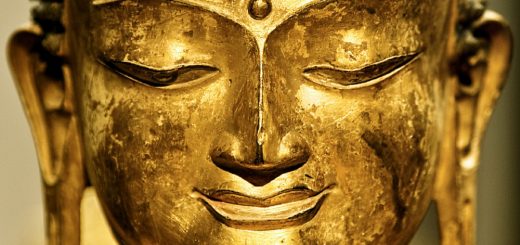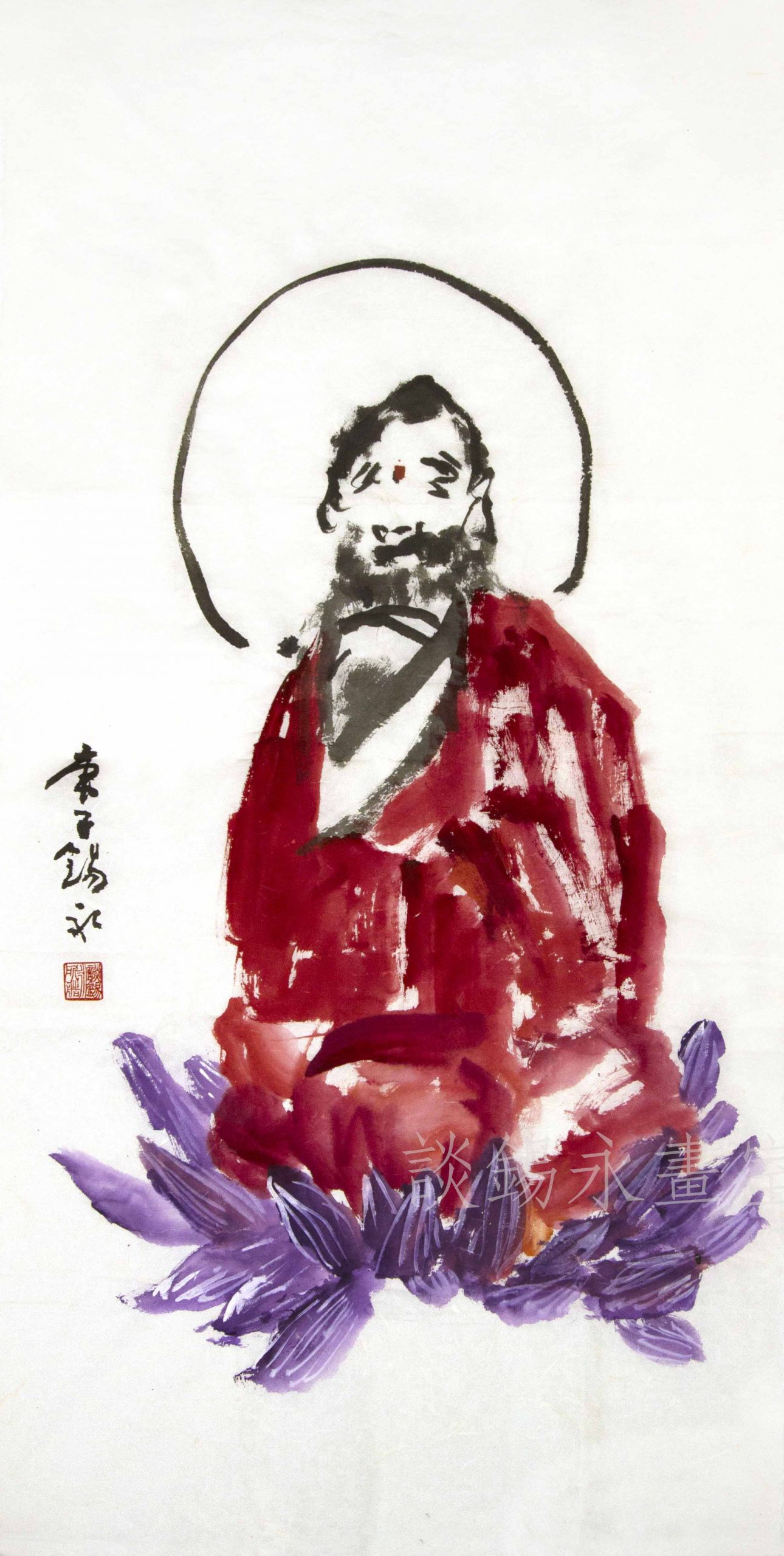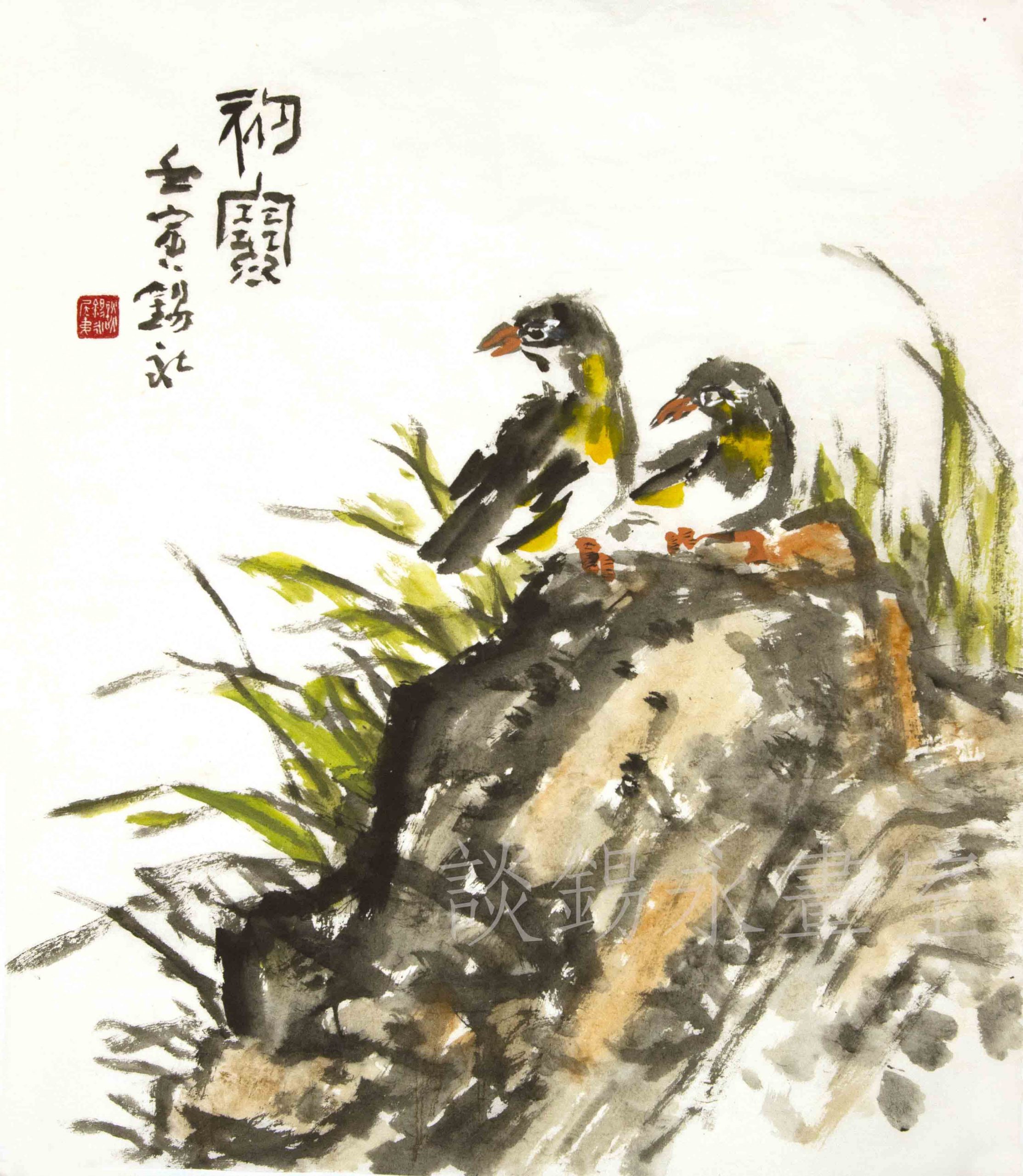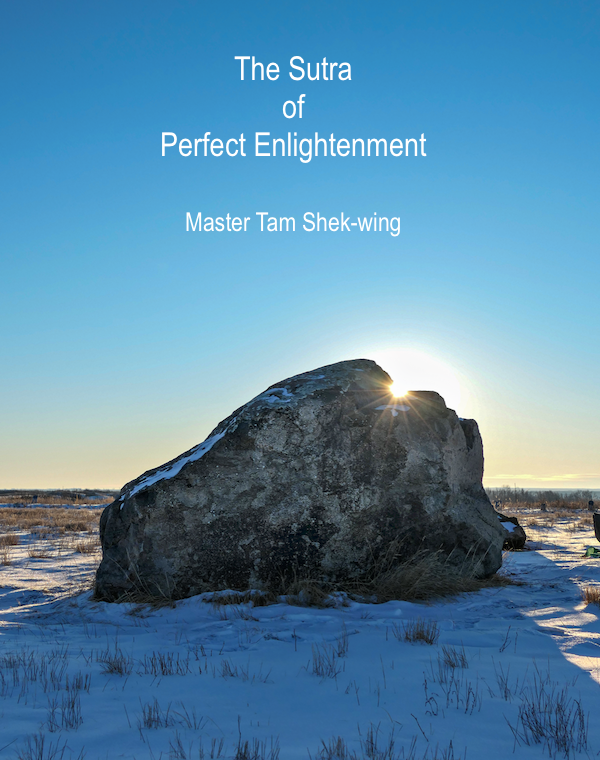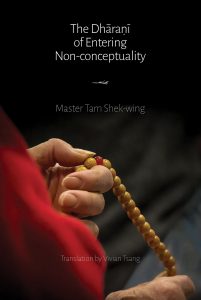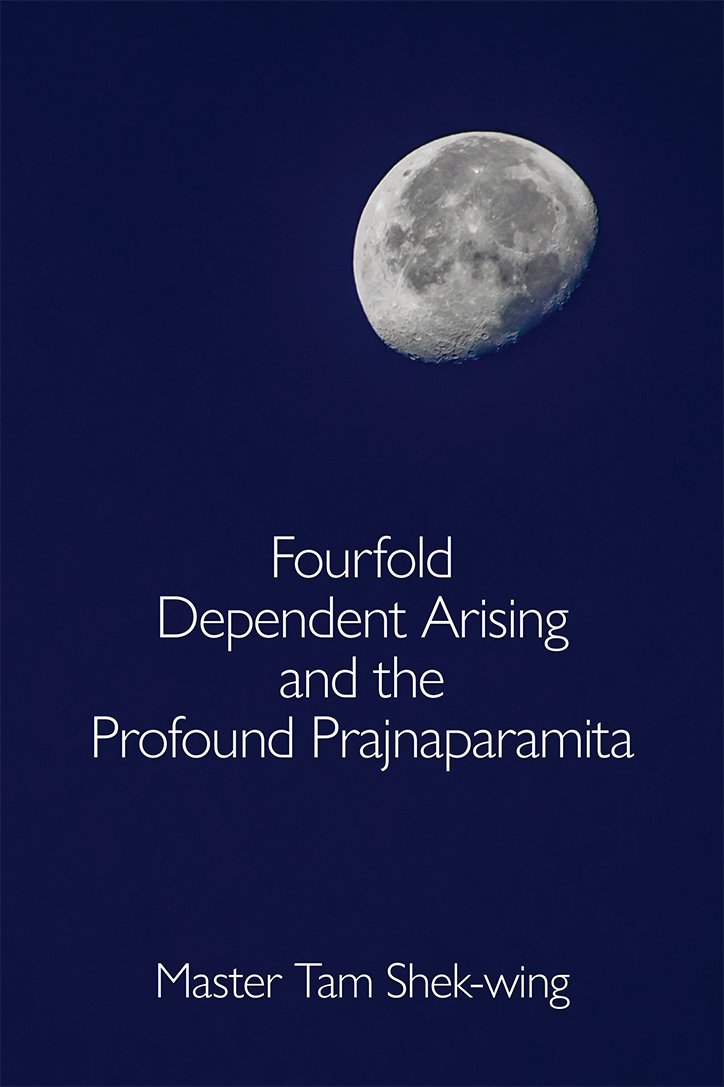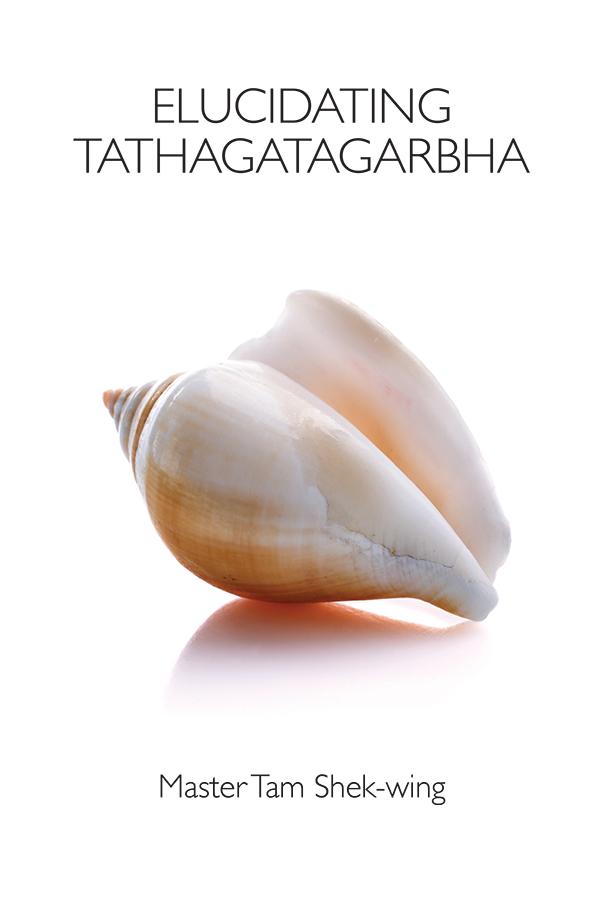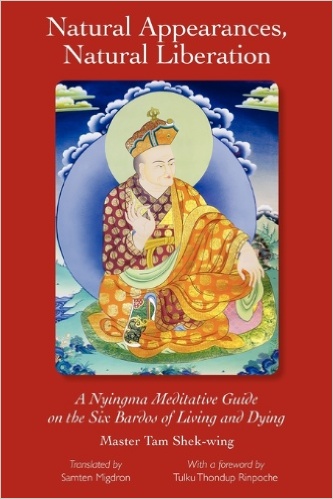Perfect Enlightenment 14: Vajragarbha: “Originally Perfect Buddha” and Ignorance
Show scripture (Chinese). 於是金剛藏菩薩在大眾中即從座起,頂禮佛足右遶三匝,長跪叉手而白佛言:「大悲世尊!善為一切諸菩薩眾宣揚如來圓覺清淨大陀羅尼因地法行漸次方便,與諸眾生開發蒙昧;在會法眾承佛慈誨,幻翳朗然,慧目清淨。世尊!若諸眾生本來成佛,何故復有一切無明?若諸無明眾生本有,何因緣故,如來復說本來成佛?十方異生本成佛道,後起無明;一切如來,何時復生一切煩惱?唯願不捨無遮大慈,為諸菩薩開祕密藏,及為末世一切眾生,得聞如是修多羅教了義法門永斷疑悔。」作是語已五體投地,如是三請終而復始。 Show scripture (English). Then the bodhisattva Vajragarbha rose from his seat in the great assembly and bowed his head to the Buddha’s feet. He circumambulated him three times to the right, and then he knelt down with his hands clasped and said to the Buddha: “Greatly Compassionate World Honoured One, you have lectured superbly for all these bodhisattvas about the tathāgata’s purity of Perfect Enlightenment, the great dhāraṇī, the dharma practice of the causal stage and gradient practices according to provisional explanations. You have cleared away the sentient beings’ clouds of darkness; all those at this dharma assembly, having received your compassionate instruction, have clarified their optical illusions and purified their wisdom eye.” “World Honoured One; if all sentient beings are originally perfect buddhas, then how can they also possess ignorance? If sentient beings are originally ignorant, how can you say that they have always been perfect buddhas? If all the worldlings in the ten directions are originally perfectly enlightened, but later give rise to ignorance, at what point do all these tathāgatas regenerate these afflictions? My only request is that you not discard your limitless great compassion and that you reveal the concealed treasure to the bodhisattvas and sentient beings of the degenerate age. This will cause bodhisattvas to gain unshakable faith, and allow all sentient beings of the degenerate age to gain access to this teaching which is a sutra instruction of the complete doctrine, such that they can permanently sever doubt and regret.” Having said this, he prostrated himself to the ground. He asked this question three times in succession. The fourth bodhisattva is Vajragarbha, but the third one inquiring into the practice. Here we can briefly explain the significance of the bodhisattva’s name. In the Buddhist Canon, every time the word “vajra” is used, it refers to a realm that is both secret and subtle (秘密). A profound teaching that is not presented to an unsuited audience, we can call it “secret” (秘). When it is taught by words, the wording is nuanced, we can call it “subtle” (密). Therefore, “Vajragarbha” is the “garbha” that is secret and subtle, or the Buddha-Within. Vajragarbha began by saying, “Greatly Compassionate World Honoured One, you have lectured superbly for all these bodhisattvas about the tathāgata’s purity of Perfect Enlightenment, the great dhāraṇī, the dharma practice of the causal stage and gradient practices according to provisional explanations. You have cleared away the sentient beings’ clouds of darkness…” What is called “tathāgata’s purity of Perfect Enlightenment, the great dhāraṇī” is the entrance to the Buddha-Within. Previously, to answer Universal Vision, Buddha already pointed out that the wisdom realm of tathāgata’s perfect enlightenment is the Buddha-Within. To speak of “tathāgata’s purity of Perfect Enlightenment” is to speak of its primordial purity that permeates the entire dharmadhātu. On being originally perfect buddhas... click to show more. In answering Universal Vision, Buddha emphasized that all sentient beings are originally perfect buddhas. This is to say that for all sentient beings, the nature of their mind possesses the buddha-nature, the nature of phenomena as the awareness of perfect enlightenment, which can be said to be the subtle secret of the Buddha-Within. This subtle secret can also be called “Vajragarbha.” In the Buddhist Canon, whenever it specifically discusses the virtue of Buddha-Within, the name of Vajragarbha is used, for “vajra” possesses seven virtues. When each of them is discussed in detail, it would become clear what the virtue of the coalescent realm is. This realm is the coalescence of dharmakaya and the virtue of dharmakaya. On the seven vajra virtues and the great equality... click to show more. The seven virtues are as follows. 1. Without blemish: dharmakaya is pristine and without blemish. 2. Indestructible: dharmakaya and its virtue are indestructible. 3. Not insubstantial: dharmakaya possesses the capacity to give rise to all worlds. 4. Uncontaminated: there are the spontaneous dependent arising of all worlds on dharmakaya, and in spite of the contaminations in them, dharmakaya itself remains uncontaminated. 5. Immovable: with the virtue of dharmakaya giving rise to all worlds, dharmakaya itself does not change as a result; as well, the virtue of dharmakaya is perpetually functioning. 6. Unobstructed: dharmakaya and its virtue permeates the entire dharmadhātu without obstruction. 7. Unsurpassed: dharmakaya and its virtue possess the nature of purity and great equality, there is not a nature that can surpass this nature. What Bodhisattva Vajragarbha asked was essentially a request to the Buddha to reveal the subtle secret within (秘密藏). What is most difficult to understand is that all sentient beings are originally perfect buddhas. This is still a major point of contention to the present day. Say, if sentient beings are originally perfect buddha, what then is the point of learning from Buddha? Or say, if within the mind-consciousness of beings is already the nature of buddha, the awareness that is already pure and perfect, then what is the purpose of the practice? Is it merely to prove what already exists? These doubts become a source for maligning and misrepresenting the Buddha-Within. Those who have doubts, many are unhappy with the idea that all sentient beings are already perfect buddhas, they are unhappy if, say, yaksha beings can become buddhas, and consider the idea heresy. Taking the human-centric perspective is of course a form of attachment, no longer in line with the spirit of great equality. What Vajragarbha essentially asked... click to show more. Diamond in the rough. Vajragarbha essentially asked three questions: The three questions cast doubt into Buddha’s teaching. If according to Buddha, being free from illusion is the attainment of Buddhahood with perfect awareness, and yet, how would one who is originally perfect buddha become trapped within illusory realm? Does it mean one falls into a series of being trapped in illusion, being free from illusion, then being trapped, then being free, and so on …… This is a source of contention concerning the Buddha-Within. Interpreted this way, one can no longer speak of the seven vajra virtues. This way, the virtue of dharmakaya is no longer unchanging, dharmakaya is also contaminated. Buddha’s answer comes next.Chinese:
English:
Commentary:

